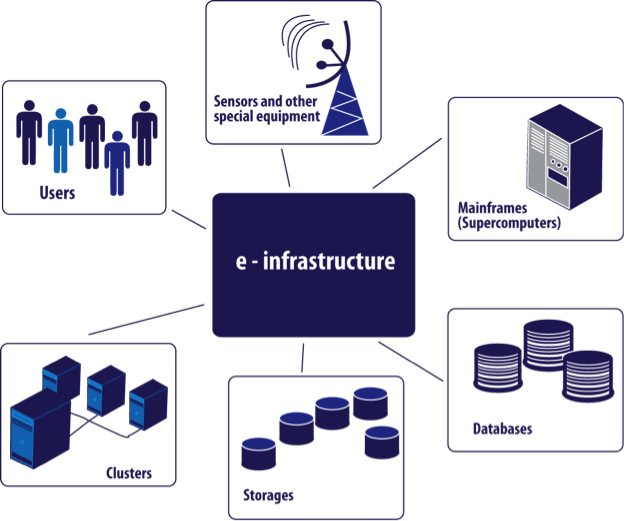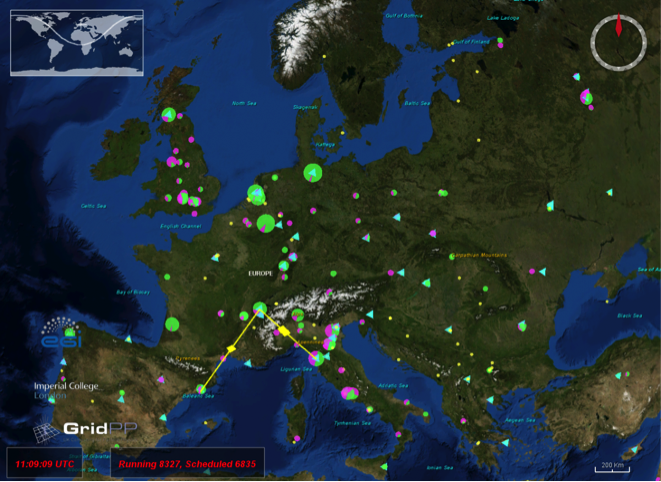About the Grid
Grid is one of the e-science tools for solving complex scientific problems, which provides access to large computing resources owned by various organisations or even located in different countries. Middleware and fast Internet has allowed combining of these resources in one infrastructure thus resulting in a single high-powered computing machine. Unlike the so-called desktop grid which uses regular computers during the idle time, this grid employs special technology which is usually held by university data centres — mainframes or supercomputers, computing clusters, and data storage facilities. Grid infrastructure may also include various scientific instruments, like telescopes, sensors and other modern equipment, that contribute to more convenient and accessible research possibilities.
Grid technologies are expected to have a crucial role in the future science; therefore, investments in developing these technologies are remarkable both in Europe and other parts of the world. Already now many projects are based on Grid technologies, including one of the largest human experiments — the Large Hadron Collider, which is implemented by CERN in cooperation with several European countries. The European-wide Grid infrastructure and flow of tasks between CERN and the computing centres is illustrated in the image.
The first and second phase of the BalticGrid project established Grid infrastructure in the Baltic States securing access to both local computing resources and the European Grid Infrastructure. However, it should be noted that joint projects or other type of cooperation with European organisations is a prerequisite to access the Grid and computing resources located in foreign organisations currently (after the BalticGrid-II). Operation of RTU Grid Site was terminated in early 2016.


